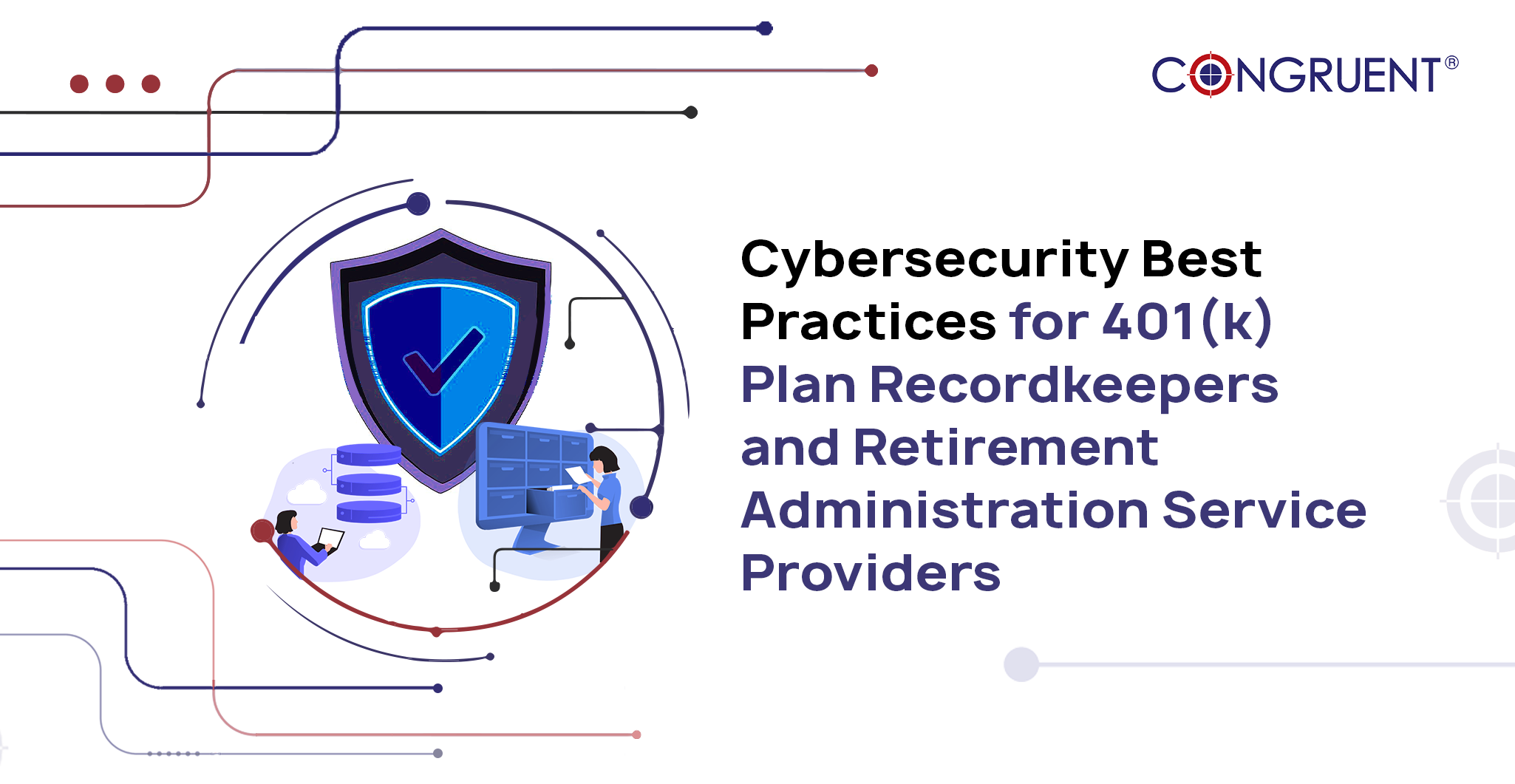
The digital age has brought immense convenience and efficiency to the administration of retirement plans. In addition, it has helped streamline processes for 401(k) plan recordkeepers and retirement administration service providers.
However, digital transformation has a significant downside of increased vulnerability to cyberattacks. In this fast-paced, technologically-driven world, ensuring the utmost security of sensitive data is more critical than ever.
This article will discuss the best practices recommended by the Employee Benefits Security Administration (EBSA) to mitigate cybersecurity risks and safeguard sensitive participant data.
Cybersecurity best practices for the retirement plan industry
Protecting participant data, financial records of plan sponsors, and other confidential plan information is essential. Any breach of such sensitive data could result in significant losses for plan administrators and recordkeeping organizations and put their participants at risk.
Employee Benefits Security Administration (EBSA), on April 14, 2021, shared cybersecurity guidance based on the Employee Retirement Income Security Act of 1974 (ERISA) by the U.S. Department of Labor (DOL).
The following cybersecurity best practices will ensure that retirement plan administration service providers maintain compliance with regulatory guidelines. With measures to secure participant information, plan administrators and recordkeepers can protect themselves from costly fines and other penalties due to non-compliance.
Here is a list of cybersecurity best practices based on the guidelines:
1. Document your cybersecurity program
A well-documented cybersecurity program is essential in this digital age. Ensure you have a clear guideline outlining your security measures, including policies and procedures, to address potential risks and vulnerabilities in your system. The documentation should be up-to-date, subject to periodic review, and easily accessible to relevant personnel.
2. Conduct annual risk assessments
You can never be too careful when protecting sensitive retirement plan data. Annual risk assessments allow your organization to identify and address potential gaps in your cybersecurity framework. In addition, regularly evaluating the effectiveness of your security controls will allow you to adapt and respond to the ever-evolving landscape of cybersecurity threats.
3. Schedule annual third-party audits of security controls
Third-party audits are critical to ensuring the integrity and effectiveness of your cybersecurity measures. You can further bolster your clients’ confidence in your organization’s commitment to securing sensitive data by seeking external verification.
4. Carefully assign information security roles and responsibilities
Paying careful attention to assigning information security roles and responsibilities is crucial in building a well-rounded cybersecurity program. Ensure that all employees, including management and IT professionals, understand and fulfill their roles in maintaining the security of sensitive information.
5. Implement robust access control procedures
Access control is the first line of defense in a secure cybersecurity program. Ensure you have implemented stringent authentication processes, such as requiring strong, unique passwords for each user and employing multi-factor authentication when possible. Additionally, restrict user access to sensitive data on a need-to-know basis.
6. Maintain appropriate security reviews of data stored in the Cloud
Cloud storage has made data storage more accessible and provides easy access to it. However, it also presents its own set of unique risks. Ensuring the same level of cybersecurity protection for your data stored in the Cloud as you would for on-premises storage is vital. Implement regular security reviews of Cloud-stored data and verify that your Cloud service provider has robust security measures.
7. Conduct periodic cybersecurity awareness training
Your employees are your cybersecurity team’s most valuable asset. But without proper training, they can be the weakest link. Equip your personnel with the knowledge they need to prevent, identify, and respond to potential cyber threats by conducting periodic cybersecurity awareness training programs.
8. Encrypt sensitive data during storage and transit
Encryption is a powerful tool for safeguarding sensitive data against unauthorized access. Encrypted data is useless to anyone lacking the appropriate decryption key, reducing the potential damage of a security breach. Ensure all sensitive participant data, both in storage and transit, is encrypted to maintain optimal data security.
Conclusion
The responsibility of protecting the sensitive information entrusted to 401(k) plan recordkeepers and retirement administration service providers cannot be overstated. Therefore, using a robust 401(k) plan administration software such as CORE 2.0 by Congruent Solutions is critical.
Combining the power of advanced technology, CORE 2.0 helps recordkeepers and retirement administration service providers meet compliance requirements and protect participant data. Connect with our retirement plan industry experts today to understand how we can help you stay ahead of the curve with our software and expertise.
